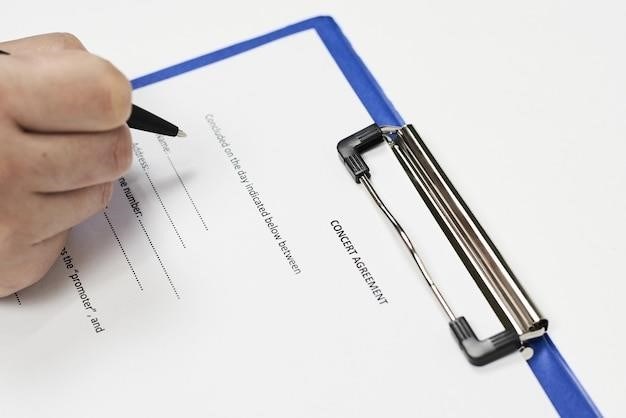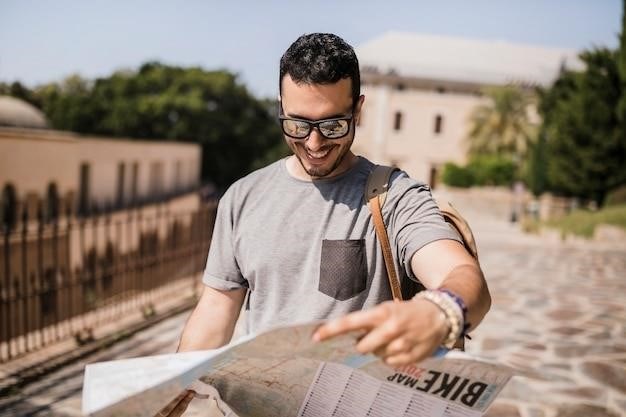Understanding Whitetail Deer Score Sheets
Whitetail deer score sheets, like those from Boone & Crockett and Pope & Young, quantify antler size using specific measurements and formulas. These PDFs provide structured methods for recording and calculating scores, distinguishing typical and non-typical racks.
Boone and Crockett Club Scoring System
The Boone and Crockett Club (B&C) scoring system is a widely recognized standard for evaluating North American big game trophies, including whitetail deer. This system meticulously details how to measure antler characteristics such as beam length, point length, spread, and circumference. Measurements are taken using a flexible steel tape, recorded to the nearest eighth of an inch, and then applied to a specific formula to calculate the total score. The B&C system differentiates between “typical” and “non-typical” racks, with “typical” referring to racks exhibiting symmetrical antler growth conforming to a specific pattern. “Non-typical” racks possess atypical points or formations, which are scored differently and often result in higher overall scores. The B&C website provides detailed instructions and downloadable PDF score sheets to aid in the process. Minimum scores exist for entry into the B&C record books, ensuring only truly exceptional whitetail deer are recognized.
Pope and Young Club Scoring System
The Pope and Young Club (P&Y) maintains a distinct scoring system specifically for big game animals harvested with archery equipment. Similar to the Boone and Crockett system, the P&Y method involves precise measurements of antler features such as beam length, point length, and spread. These measurements, taken with a flexible steel tape to the nearest eighth of an inch, are then input into a specific formula to calculate the final score. The P&Y system also distinguishes between “typical” and “non-typical” racks, applying different scoring rules for each category. Typical racks adhere to a symmetrical antler growth pattern, while non-typical racks display irregular or unusual formations. Official P&Y score sheets are available as downloadable PDFs, providing clear instructions and scoring tables. Minimum score requirements exist for entry into the P&Y record books, ensuring that only exceptional archery harvests are recognized. These minimums are generally lower than those of B&C, reflecting the challenges of archery hunting.
Minimum Score Requirements
Entry into prestigious record books like those maintained by the Boone and Crockett Club (B&C) and the Pope and Young Club (P&Y) necessitates meeting specific minimum score requirements. These minimums vary depending on the species and whether the rack is classified as “typical” or “non-typical.” For example, B&C sets a higher bar for whitetail deer, demanding a minimum score of 170 for typical racks and 195 for non-typical ones. The P&Y Club, focusing on archery harvests, typically establishes lower minimums, acknowledging the inherent challenges of bowhunting. These minimum scores serve as benchmarks for exceptional trophies, ensuring that only the largest and most impressive specimens are recognized. The specific minimum scores are clearly outlined in the official score sheets and publications of each organization. These requirements are regularly reviewed and potentially adjusted based on ongoing data and changing wildlife populations. Therefore, always consult the most recent official guidelines when assessing a whitetail deer’s eligibility for record book entry.

Accessing Whitetail Deer Score Sheet PDFs
Official score sheets are downloadable PDFs from the Boone & Crockett and Pope & Young websites. Many online resources also offer templates and guides for scoring.
Downloading Score Sheets from Official Websites
The most reliable source for accurate whitetail deer score sheets is the official websites of organizations like the Boone and Crockett Club (B&C) and the Pope and Young Club (P&Y). These websites typically house a dedicated section for record-keeping and scoring information. Navigation is usually straightforward; look for sections labeled “Records,” “Scoring,” or similar terms. Once located, you’ll likely find downloadable PDF versions of the official score sheets. These PDFs are essential for accurate scoring because they contain detailed instructions and diagrams showing exactly how to measure antler points, beams, and other features. Downloading directly from the official sources ensures you’re using the most up-to-date and approved versions, vital for official record submissions. Remember to check for updates periodically, as scoring guidelines might change occasionally.
Online Scoring Resources
Beyond official websites, numerous online resources offer assistance with whitetail deer scoring. While official score sheets (PDFs) remain crucial for precise measurements and record-keeping, online tools can supplement the process. Some websites provide interactive scoring calculators that guide users through the measurement process, offering immediate feedback on the total score. These online tools often include detailed explanations of the scoring system, clarifying any ambiguities in the official rules. However, it is vital to remember that while convenient, online calculators should not replace the official score sheet PDF. Always cross-reference any online calculated score with measurements taken directly from the official score sheet. Official scoring remains the responsibility of certified measurers, ensuring accuracy and adherence to established standards. Use online tools as aids, but never as the sole determinant of a deer’s score.
Third-Party Score Sheet Templates
While official Boone and Crockett or Pope and Young Club score sheets (available as PDFs) are recommended for official scoring and record submissions, various third-party sources offer alternative templates. These templates, often found online, might provide slightly different formats or layouts but generally adhere to the fundamental scoring principles. Using a third-party template is acceptable for personal use or informal scoring among hunters, but it’s crucial to understand that scores derived from these unofficial templates will not be recognized by official record-keeping organizations. Always use an official score sheet PDF for any entry into official record books. Third-party templates might lack the precise details or the officially endorsed accuracy of the official documents, so rely on them only for casual estimations, never for formal scoring purposes. Accuracy is paramount in big game trophy scoring.

Using a Whitetail Deer Score Sheet
Official score sheets guide accurate measurements of antler points and beams, leading to a total score. Understanding the difference between typical and non-typical scoring is crucial for accurate results.
Measuring Antler Points and Beams
Precise measurement is paramount when using a whitetail deer score sheet PDF. Employ a flexible steel tape measure or a steel cable, ensuring accuracy to the nearest eighth of an inch. For points, measure from the tip of each point to the nearest edge of the main beam. The beam tip itself counts as a point but isn’t measured as a point length. Circumference measurements are typically taken at four specific locations on each antler beam, as indicated on the score sheet. Remember that only tines growing directly from the top of the main beam are initially measured as typical points; others are considered abnormal points and are measured separately. Pay close attention to the specific instructions provided on your chosen score sheet, as slight variations in measurement techniques may exist between different organizations’ scoring systems. Consistent and careful measurement is key to obtaining an accurate score.
Calculating Total Score
After meticulously measuring all antler points and beams according to the instructions on your chosen whitetail deer score sheet PDF, the next step is calculating the total score. This typically involves adding up the individual scores for each antler feature—point lengths, beam lengths, and circumferences—as detailed on the form. Specific formulas and scoring systems vary between organizations like Boone and Crockett and Pope and Young. Some systems incorporate bonus points for specific antler characteristics, such as inward-curving beams in typical whitetail racks. Carefully follow the instructions provided on your specific score sheet PDF to ensure accuracy. Double-check all your measurements and calculations to avoid errors. The final total score represents a numerical representation of the antler’s size and complexity, providing a standardized way to compare different whitetail deer racks. Accurate calculation is essential for official record keeping and scoring competitions.
Understanding Typical vs. Non-Typical Scoring
Whitetail deer score sheets differentiate between “typical” and “non-typical” antlers. Typical antlers conform to a symmetrical, predictable branching pattern, with points arising from the main beam in a consistent manner. Non-typical antlers exhibit irregularities; extra points, abnormal branching, or asymmetrical growth patterns. Scoring systems often employ different formulas for each category. Typical antlers are scored based on a standard set of measurements, while non-typical antlers often include additional points and calculations. The score sheet PDF will clearly outline the specific criteria for each category. Understanding this distinction is vital for accurately scoring a whitetail rack, as different scoring methods apply depending on whether the rack is considered typical or non-typical. Careful examination of the antler’s structure is crucial for correct classification before beginning the scoring process.
Field Scoring Whitetail Deer
Field scoring provides a quick, on-site estimate of a whitetail deer’s antler score. While less precise than official measurements, it offers a valuable initial assessment using simplified techniques.
Quick Scoring Techniques
Efficient field scoring demands a streamlined approach. Begin by visually assessing the main beam length; a quick estimation will help establish a baseline. Next, count and roughly measure the points, focusing on the longest points for a preliminary score. Remember, accuracy is compromised for speed in this method. The spread of the antlers provides another crucial visual cue. Experienced hunters can often gauge the spread with a practiced eye, aiding in a rapid estimation. These quick techniques rely heavily on experience and visual judgment. Consider using a simple measuring device, like a folding rule or even your handspan for quick comparisons. The goal is to obtain a reasonable approximation, not a precise score; refinement comes during official scoring. Keep in mind that this is an estimation, and discrepancies will likely occur when compared to official measurements using a score sheet and proper tools.
Accurate Measurement Methods
Precise whitetail deer antler scoring necessitates meticulous measurement techniques. Utilize a flexible steel tape measure or a steel cable, ensuring accuracy to the nearest eighth of an inch. Begin by measuring the main beams from the burr (where the antler emerges from the skull) to the tip of each beam. Record these measurements on your score sheet. Next, carefully measure each point, from its tip to the nearest edge of the main beam. Pay close attention to detail; even small discrepancies can significantly impact the final score. For circumference measurements, place the tape measure around the widest part of each beam section, as indicated on the score sheet. Remember, consistent placement is key for reliable results. If using a score sheet PDF, ensure you are using the correct version and understand the instructions. Take your time and double-check all measurements before calculating your final score. Accurate measurements are crucial for an official score and fair comparison with other entries.
Important Considerations for Field Scoring
Field scoring whitetail deer presents unique challenges. While convenient, it compromises precision compared to a controlled setting. Lighting conditions, especially in low-light situations, can hinder accurate measurements. The angle from which you view the antlers can also influence your perception of their size and shape. Additionally, the excitement and adrenaline following a successful hunt might affect your focus and attention to detail. Therefore, it’s advisable to take several measurements of each antler section and note any discrepancies. Remember that field scoring provides an estimate, not a definitive score. If you intend to submit your deer for official scoring, ensure you have a designated official measurer. They have the expertise and tools to perform a precise evaluation. Prioritize safety; handle the antlers carefully, avoiding accidental damage; If possible, photograph the antlers from multiple angles as a visual record to aid the official scorer. Proper field scoring techniques enhance accuracy, but official measurement remains the gold standard for record-keeping.



























